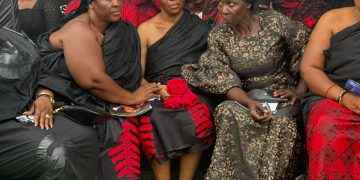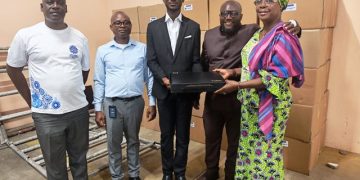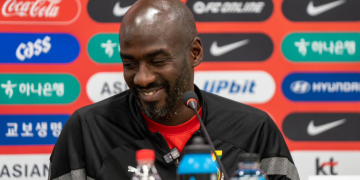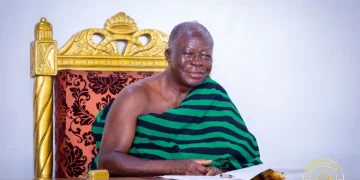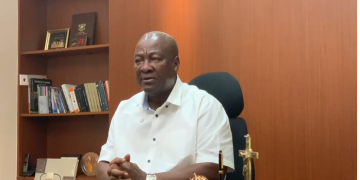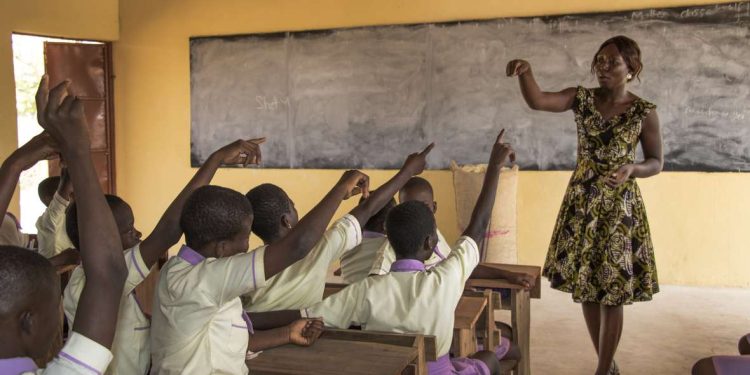Schools tailored to girls’ needs in northern Ghana are removing barriers, encouraging girls to become independent thinkers, and motivating them to pursue higher education.
The average girl in Ghana only receives four years of education. Early marriage, pregnancy, poverty, and sexual harassment are all obstacles that force girls to drop out of school before the end of junior high.
At Oxfam, we know educating girls is critical to improving their lives. Each additional year of primary school a girl attends increases her future wages by 10 to 20 percent. Educated girls also are likely to marry later and have fewer children, and their children are also more likely to thrive.
With that in mind, we partnered with Ghana Education Service, the Sawla-Tuna-Kalba district, and local communities to build a junior high school in the northern province of Sawla to tackle barriers preventing girls from finishing their educations. We aimed to demonstrate that safe, girl-friendly schools would empower girls and motivate them to stay in school—and maybe even pursue higher education.
That school became a model for girls’ success in Ghana.
Laying the groundwork
The first Girls Model Junior High School opened in Sawla in 2008, targeting girls from the poorest families. All 28 enrolled girls passed their final exams, and 24 went on to attend senior high school. In 2013, a sister school was established in the Kpandai district. By March 2018—a decade after the project began—there were 44 schools in districts across northern Ghana. They are all financed and administered by local authorities.

Haddisah Ibrahim, 15, learned about the Savelugu Girls Model Junior High School when a teacher came to her village. “He told us about the new school that was opening—that it was a good place where we could learn a lot. I wanted to go, and my father agreed.”
She’s now a student and likes that her school is girls-only. “It makes me feel more confident in myself when there are no boys around,” she says. “We don’t have to put up with all the noise the boys at my old school used to make.”
Her father can’t always afford to pay for her schoolbooks, but Haddisah isn’t discouraged. She borrows books from her classmates when she needs to. Hadissa is committed to finishing school and becoming a doctor. “One day I will return to this area and help treat the sick people in my home town,” she says.
A different style of teaching
Tackling endemic problems requires innovative solutions, so the schools have taken a novel approach to pedagogy. Teaching is based on learner-centered methodologies, a concept that has previously not applied very often by teachers in this part of Ghana, who lacked the know-how to implement it. Discussions and group work are core elements. The girls form study groups in the evenings. Parents are invited to support the girls’ education through school management committees.
Computers are integrated into lessons, and teachers are trained to encourage the girls to participate actively in the classroom, and even to challenge teachers with individual points of view. These schools go beyond the national curriculum to address sexual health and life skills.
Gladys Asare Akosu is a teacher at Savelugu Girls Model School. “Traditionally, girls’ education is not considered important in this part of Ghana. Many people believe that a girl should just get married as early as possible—they don’t see much sense in wasting time and money on the girls going to school,” she says. “That’s extremely unfair.”
For her, teaching here is different from what she’s used to. There are fewer students in each class, which makes it easier to focus on each child’s needs.
“As teachers, we do a lot to involve the students instead of just lecturing. We encourage them to participate in discussions,” she says. “Some of the girls were very shy in the beginning, but now they raise their hands and take part in the discussions. It is amazing to witness such a change in a young girl.”
Akosu knows adolescence is a fragile time for girls. Teenage pregnancies and child marriages are far too common in this part of Ghana, and consequently many girls drop out before they graduate high school. Compounding that is the fact that many of her students come from poor families and live far away.
Parental support is integral to the schools’ success. If a girl misses more than a day or two of school, the headmistress gets in touch with the family. Akosu says it’s not uncommon for educators to go on home visits to prevent girls from dropping out.
“I really enjoy being part of the change that we are making here,” she says. “Hopefully our work will help eradicate the old prejudices toward girls’ education. These girls just have so much to offer.”

Increasing the chance for success
Ninety-five percent of the girls registered at the Girls Model Junior High Schools have graduated, and the majority are continuing their education. In the schools’ surrounding communities, girls constitute just 10% of the children who graduate from junior high school.
In total, more than 1,642 girls are now enrolled at the model schools, and the goal is to continue scaling up.
”The Girls Model School is a baby for us in Savelugu,” says Municipal Chief Executive Hajia Adishetu Seidu. “When we educate girls, we break the cycle of poverty. Women take care of their families, they share everything they earn, and they make sure that their own children also go to school.”
Source: www.kumasimail.com




